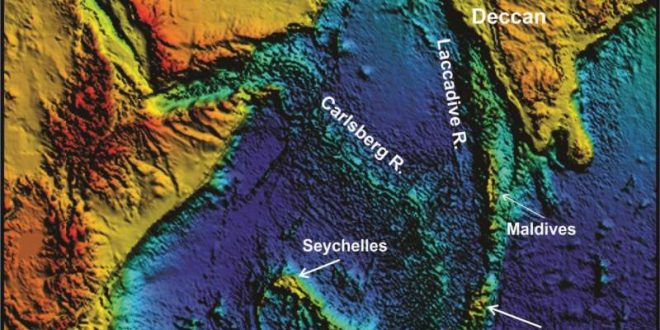Researchers has confirmed that there was a lost continent under the island of Mauritius in the Indian Ocean. They said the landmass( now dubbed as ‘Mauritia’) was left over after the Gondwana super-continent split about 200 to 300 million years ago.
The fragment appears to have broken off from the island of Madagascar when Africa, India, Australia, and Antarctic spilt apart and formed the Indian Ocean, lead author Lewis Ashwal, a professor at Wits University in South Africa and his colleagues reported in their study.
After breaking off from the supercontinent, the piece of crust was covered by lava following volcanic eruptions on the island, and by studying the zircon content of the rocks, Ashwal’s team determined that the mineral remnants were far too old to have come from Mauritius itself.
“Earth is made up of two parts – continents, which are old, and oceans, which are ‘young,’ the professor explained in a statement. “On the continents, you find rocks that are over four billion years old, but you find nothing like that in the oceans, as this is where new rocks are formed.”
“Mauritius is an island, and there is no rock older than 9 million years old on the island,” added Ashwal. “However, by studying the rocks on the island, we have found zircons that are as old as 3 billion years.”
Findings support a controversial earlier study
According to the researchers, zircons are minerals that are predominantly found in granites from the continents and contain trace amounts of uranium, thorium, and lead. Since these minerals are able to survive geological processes well, they can be dated with very high accuracy.
The findings support a 2013 study in which traces of several-billion-year-old zircons were found in beach sand on the island of Mauritius – research which the authors of the new study noted has been criticized because the mineral may have been brought there by other means (for instance, it could have been blown in by the wind or inadvertently brought there by scientists).
However, Ashwal said, “The fact that we have found zircons of this age proves that there are much older crustal materials under Mauritius that could only have originated from a continent.” His team’s results “corroborates the previous study and refutes any suggestion of wind-blown, wave-transported or pumice-rafted zircons for explaining the earlier results,” he added.
Furthermore, he and his colleagues reported that the findings suggest that the break of up the supercontinent Gondwana (also known as Gondwanaland) was a complex process which left a number of various splintered fragments spread throughout the Indian Ocean. This process was the result of shifting plate tectonics, and left behind “fragments of continental crust of variable sizes,” the Wits University professor concluded.
Agencies/Canadajournal
 Canada Journal – News of the World Articles and videos to bring you the biggest Canadian news stories from across the country every day
Canada Journal – News of the World Articles and videos to bring you the biggest Canadian news stories from across the country every day



